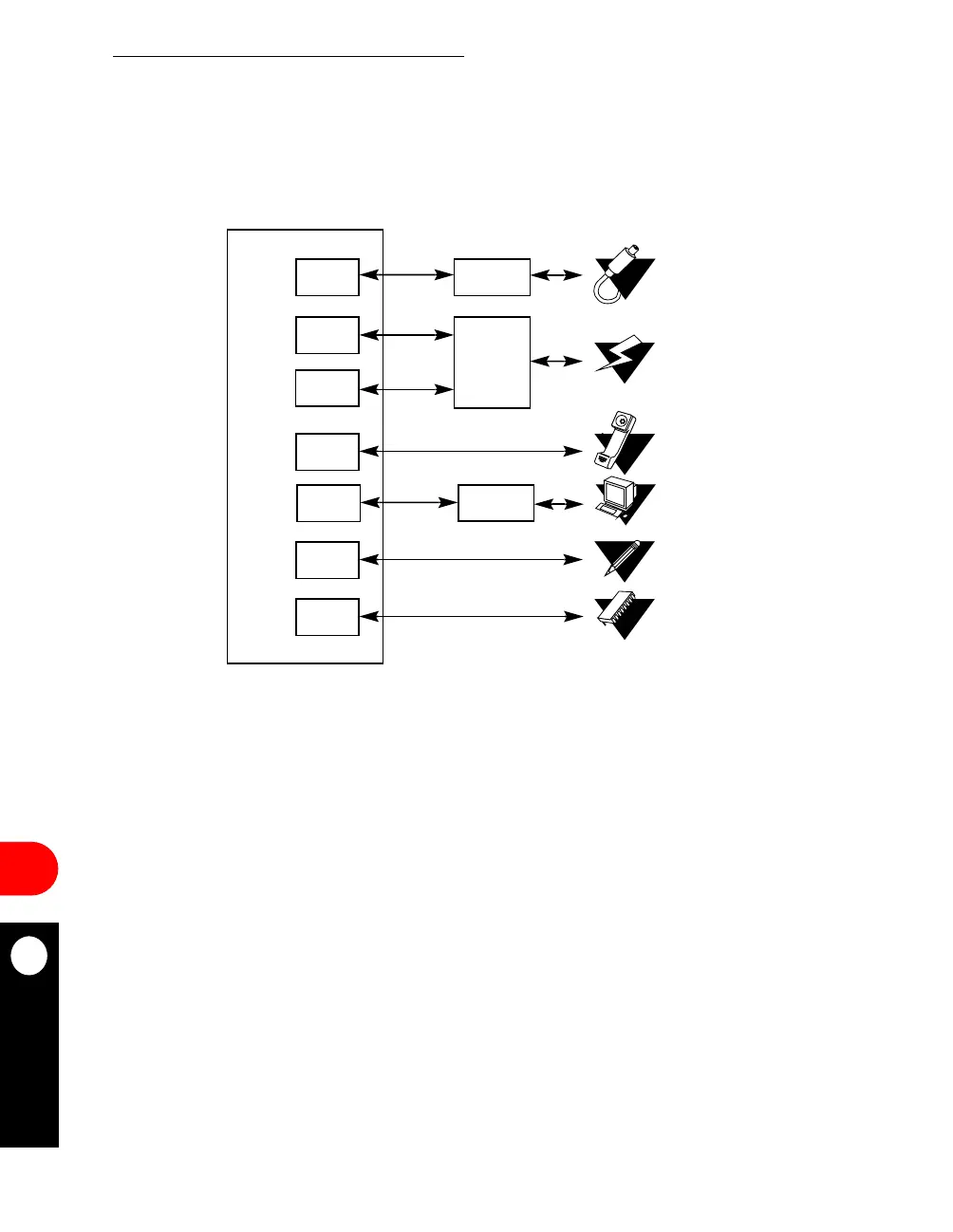Communication Processor Module
16-4
MPC823e REFERENCE MANUAL
MOTOROLA
RISC
COMMUNICATION
16
PROCESSOR MODULE
The MPC823e offers an extremely flexible set of communication capabilities. The remainder
of this section discusses all the possible ways you can configure the communication
processor module. Figure 16-2 illustrates a sample configuration for a personal digital
assistant (PDA) application that supports various communication links and protocols.
16.2 THE RISC MICROCONTROLLER
The 32-bit RISC microcontroller for the communication processor module resides on a
separate bus from the core and, therefore, does not impact the core’s performance. The
microcontroller operates in conjunction with the serial channels and parallel port to
implement the user-programmable protocols and manage the serial DMA (SDMA) channels
that transfer data between the I/O channels and memory. The RISC microcontroller
architecture and instruction set are optimized for data communication and data processing
functions that are required by many wire-line and wireless communication standards. The
microcontroller also contains a multiply and accumulate (MAC) unit composed of a 16x16-bit
multiplier with two 40-bit accumulators that enable you to implement many DSP
applications.
Basically, the microcontroller handles low-level arithmetic tasks and DMA control activities,
which leaves the core free to handle the high-level activities. You could say it is the controller
of the communication processor module. It manages IDMA channel operation and contains
an internal timer that you can use to implement a maximum of 16 additional software timers.
MPC823e
Figure 16-2. Example of a PDA Application
USB
SCC2
I
2
C
SMC1
SMC2
SPI
INFRA-RED
XCVR
USB
XCVR
USB
PORT
INFRA-RED
LINK
VOICE
SYNTHESIZER
I
2
C BUS
SCREEN
DIGITIZER
SPI BUS
RADIO
INTERFACE
RS232
XCVR
UART
PORT
SCC3

